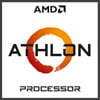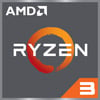
Intel Pentium Silver N5030 Benchmark, Test and specs
Last updated:
The Intel Pentium Silver N5030 is a 4 core processor. It can handle 4 threads simultaneously and was introduced in Q4/2019. The Intel Pentium Silver N5030 is based on the 9. generation of the Intel Pentium series and requires a mainboard with the socket BGA 1090. The Intel Pentium Silver N5030 scores 500 points with one CPU core in the Geekbench 5 benchmark. When using all CPU cores, the result is 1,333 points.
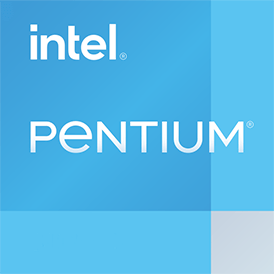
| Name: | Intel Pentium Silver N5030 |
|---|---|
| Family: | Intel Pentium (150) |
| CPU group: | Intel Pentium J5000/N5000 (4) |
| Architecture: | Gemini Lake |
| Segment: | Mobile |
| Generation: | 9 |
| Predecessor: | -- |
| Successor: | -- |
CPU Cores and Base Frequency
The 4 CPU cores of the Intel Pentium Silver N5030 clock with 1.10 GHz (3.10 GHz). The number of CPU cores and the clock frequency of the processor are largely responsible for the overall performance.
| CPU Cores / Threads: | 4 / 4 |
|---|---|
| Core architecture: | normal |
| Cores: | 4x |
| Hyperthreading / SMT: | No |
|---|---|
| Overclocking: | No |
| Frequency: | 1.10 GHz |
| Turbo Frequency (1 Core): | 3.10 GHz |
| Turbo Frequency (4 Cores): | 2.40 GHz |
Internal Graphics
With the Intel UHD Graphics 605, the Intel Pentium Silver N5030 has an build in graphic solution. It has 18 SM processors, which have a total of 144 texture shaders. The iGPU not only enables games, but also significantly accelerates video playback.
| GPU name: | Intel UHD Graphics 605 |
|---|---|
| GPU frequency: | 0.25 GHz |
| GPU (Turbo): | 0.75 GHz |
| Compute units: | 18 |
| Shader: | 144 |
| Hardware Raytracing: | No |
| Release date: | Q4/2017 |
| Max. displays: | 3 |
|---|---|
| Generation: | 9.5 |
| Direct X: | 12 |
| Technology: | 14 nm |
| Max. GPU Memory: | 8 GB |
| Frame Generation: | No |
Hardware codec support
Processors that have an integrated graphics can play videos faster and more efficiently. This can have a positive effect on the battery life of notebooks, for example.
| h265 / HEVC (8 bit): | Decode / Encode |
|---|---|
| h265 / HEVC (10 bit): | Decode / Encode |
| h264: | Decode / Encode |
| VP8: | Decode / Encode |
| VP9: | Decode / Encode |
| AV1: | No |
|---|---|
| AVC: | Decode / Encode |
| VC-1: | Decode |
| JPEG: | Decode / Encode |
Memory & PCIeThe Intel Pentium Silver N5030 supports up to 8 GB memory in up to 2 (Dual Channel) memory channels. This results in a maximum memory bandwidth of 38.4 GB/s. |
|
| Memory type: | Memory bandwidth: |
|---|---|
| LPDDR4-2400 DDR4-2400 | 38.4 GB/s 38.4 GB/s |
| Max. Memory: | 8 GB |
| Memory channels: | 2 (Dual Channel) |
| ECC: | No |
| PCIe: | 2.0 x 6 |
| PCIe Bandwidth: | 3.0 GB/s |
Thermal ManagementWith the TDP, the processor manufacturer specifies the cooling solution required for the processor. The Intel Pentium Silver N5030 has a TDP of 6 W. |
|
|---|---|
| TDP (PL1 / PBP): | 6 W |
| TDP (PL2): | -- |
| TDP up: | -- |
| TDP down: | 4.8 W |
| Tjunction max.: | 105 °C |
Technical details
The Intel Pentium Silver N5030 has a 4.00 MB large cache. The processor is manufactured in 14 nm. Modern production increases the efficiency of the processor.
| Technology: | 14 nm |
|---|---|
| Chip design: | Monolithic |
| Socket: | BGA 1090 |
| L2-Cache: | -- |
| L3-Cache: | 4.00 MB |
| AES-NI: | Yes |
| Operating systems: | Windows 10, Windows 11, Linux |
| Virtualization: | VT-x, VT-x EPT, VT-d |
|---|---|
| Instruction set (ISA): | x86-64 (64 bit) |
| ISA extensions: | SSE4.1, SSE4.2 |
| Release date: | Q4/2019 |
| Release price: | -- |
| Part Number: | -- |
| Documents: | Technical data sheet |
Rate this processor
Benchmark results

The benchmark results for the Intel Pentium Silver N5030 have been carefully checked by us. We only publish benchmark results that have been created by us or that have been submitted by a visitor and then checked by a team member. All results are based on and fullfill our benchmark guidelines.
Geekbench 5, 64bit (Single-Core)
Geekbench 5 is a cross plattform benchmark that heavily uses the systems memory. A fast memory will push the result a lot. The single-core test only uses one CPU core, the amount of cores or hyperthreading ability doesn't count.

|
AMD Phenom II X6 1055T
6C 6T @ 3.30 GHz |
||

|
Intel Celeron 2970M
2C 2T @ 2.20 GHz |
||

|
AMD A8-5600K
4C 4T @ 3.90 GHz |
||
|
|
Intel Pentium Silver N5030
4C 4T @ 3.10 GHz |
||

|
AMD FX-8320E
8C 8T @ 4.00 GHz |
||

|
Qualcomm Snapdragon 675
8C 8T @ 2.00 GHz |
||
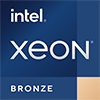
|
Intel Xeon Bronze 3104
6C 6T @ 1.70 GHz |
||
Geekbench 5, 64bit (Multi-Core)
Geekbench 5 is a cross plattform benchmark that heavily uses the systems memory. A fast memory will push the result a lot. The multi-core test involves all CPU cores and taks a big advantage of hyperthreading.

|
Intel Core i5-2520M
2C 4T @ 3.20 GHz |
||
|
|
HiSilicon Kirin 710A
8C 8T @ 2.00 GHz |
||

|
Intel Core i7-4510U
2C 4T @ 2.70 GHz |
||
|
|
Intel Pentium Silver N5030
4C 4T @ 2.40 GHz |
||

|
AMD Athlon II X4 640
4C 4T @ 3.00 GHz |
||

|
Intel Celeron G3900T
2C 2T @ 2.60 GHz |
||

|
Intel Core i7-2620M
2C 4T @ 2.70 GHz |
||
Geekbench 6 (Single-Core)
Geekbench 6 is a benchmark for modern computers, notebooks and smartphones. What is new is an optimized utilization of newer CPU architectures, e.g. based on the big.LITTLE concept and combining CPU cores of different sizes. The single-core benchmark only evaluates the performance of the fastest CPU core, the number of CPU cores in a processor is irrelevant here.
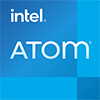
|
Intel Atom C5325
8C 8T @ 2.40 GHz |
||

|
Intel Core i7-860
4C 8T @ 3.46 GHz |
||

|
Intel Atom C5315
4C 4T @ 2.40 GHz |
||
|
|
Intel Pentium Silver N5030
4C 4T @ 3.10 GHz |
||

|
Intel Core i7-860S
4C 8T @ 3.46 GHz |
||

|
Qualcomm Snapdragon 712
8C 8T @ 2.30 GHz |
||
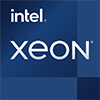
|
Intel Xeon E5450
4C 4T @ 3.00 GHz |
||
Geekbench 6 (Multi-Core)
Geekbench 6 is a benchmark for modern computers, notebooks and smartphones. What is new is an optimized utilization of newer CPU architectures, e.g. based on the big.LITTLE concept and combining CPU cores of different sizes. The multi-core benchmark evaluates the performance of all of the processor's CPU cores. Virtual thread improvements such as AMD SMT or Intel's Hyper-Threading have a positive impact on the benchmark result.

|
Intel Core i3-4012Y
2C 4T @ 1.50 GHz |
||

|
Intel Core i5-2410M
2C 4T @ 2.30 GHz |
||

|
Intel Celeron G4900T
2C 2T @ 2.80 GHz |
||
|
|
Intel Pentium Silver N5030
4C 4T @ 2.40 GHz |
||

|
Intel Pentium G3450T
2C 2T @ 2.90 GHz |
||

|
Intel Pentium 4405U
2C 4T @ 2.10 GHz |
||

|
Intel Pentium Gold 4417U
2C 4T @ 2.30 GHz |
||
iGPU - FP32 Performance (Single-precision GFLOPS)
The theoretical computing performance of the internal graphics unit of the processor with simple accuracy (32 bit) in GFLOPS. GFLOPS indicates how many billion floating point operations the iGPU can perform per second.

|
Intel Core i5-3339Y
Intel HD Graphics 4000 @ 0.85 GHz |
||

|
Intel Core i5-3439Y
Intel HD Graphics 4000 @ 0.85 GHz |
||

|
AMD A6-4455M
AMD Radeon HD 7500G @ 0.43 GHz |
||
|
|
Intel Pentium Silver N5030
Intel UHD Graphics 605 @ 0.75 GHz |
||

|
Intel Pentium Silver N5000
Intel UHD Graphics 605 @ 0.75 GHz |
||

|
Intel Pentium N4200
Intel HD Graphics 505 @ 0.75 GHz |
||

|
Intel Pentium J3710
Intel HD Graphics 405 (18EU) @ 0.74 GHz |
||
Blender 3.1 Benchmark
In the Blender Benchmark 3.1, the scenes "monster", "junkshop" and "classroom" are rendered and the time required by the system is measured. In our benchmark we test the CPU and not the graphics card. Blender 3.1 was presented as a standalone version in March 2022.

|
Intel Core i5-4288U
2C 4T @ 2.60 GHz |
||

|
Intel Core i3-1005G1
2C 4T @ 3.40 GHz |
||

|
Intel Celeron J4125
4C 4T @ 2.70 GHz |
||

|
Intel Pentium Silver J5005
4C 4T @ 2.70 GHz |
||

|
Intel Celeron J3455
4C 4T @ 2.20 GHz |
||
|
|
Intel Pentium Silver N5030
4C 4T @ 2.40 GHz |
||

|
AMD A9-9425
2C 2T @ 3.10 GHz |
||
Estimated results for PassMark CPU Mark
Some of the CPUs listed below have been benchmarked by CPU-monkey. However the majority of CPUs have not been tested and the results have been estimated by a CPU-monkey’s secret proprietary formula. As such they do not accurately reflect the actual Passmark CPU mark values and are not endorsed by PassMark Software Pty Ltd.

|
Intel Core i5-4288U
2C 4T @ 2.60 GHz |
||

|
Intel Core i5-3320M
2C 4T @ 2.60 GHz |
||
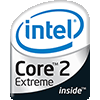
|
Intel Core 2 Extreme QX9775
4C 4T @ 3.20 GHz |
||
|
|
Intel Pentium Silver N5030
4C 4T @ 2.40 GHz |
||

|
Intel Core i3-6100U
2C 4T @ 2.30 GHz |
||

|
Intel Core 2 Extreme QX9770
4C 4T @ 3.20 GHz |
||
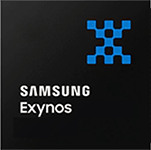
|
Samsung Exynos 850
8C 8T @ 2.00 GHz |
||
Cinebench R15 (Single-Core)
Cinebench R15 is the successor of Cinebench 11.5 and is also based on the Cinema 4 Suite. Cinema 4 is a worldwide used software to create 3D forms. The single-core test only uses one CPU core, the amount of cores or hyperthreading ability doesn't count.

|
AMD Phenom II X2 521
2C 2T @ 3.50 GHz |
||

|
AMD Phenom II X4 970
4C 4T @ 3.50 GHz |
||

|
Intel Celeron G1610
2C 2T @ 2.60 GHz |
||
|
|
Intel Pentium Silver N5030
4C 4T @ 3.10 GHz |
||

|
AMD FX-8320E
8C 8T @ 4.00 GHz |
||

|
Intel Celeron G1820T
2C 2T @ 2.40 GHz |
||

|
AMD FX-8320
8C 8T @ 4.00 GHz |
||
Cinebench R15 (Multi-Core)
Cinebench R15 is the successor of Cinebench 11.5 and is also based on the Cinema 4 Suite. Cinema 4 is a worldwide used software to create 3D forms. The multi-core test involves all CPU cores and taks a big advantage of hyperthreading.

|
Intel Celeron G5920
2C 2T @ 3.50 GHz |
||

|
Intel Core m3-7Y32
2C 4T @ 1.10 GHz |
||

|
Intel Pentium G4500
2C 2T @ 3.50 GHz |
||
|
|
Intel Pentium Silver N5030
4C 4T @ 2.40 GHz |
||

|
AMD Athlon II X4 635
4C 4T @ 2.90 GHz |
||

|
Intel Core i5-5200U
2C 4T @ 2.50 GHz |
||

|
Intel Core i5-5250U
2C 4T @ 2.50 GHz |
||
Benchmarks

Geekbench 5 (SC)
2,488 entries
2,488 entries

Geekbench 5 (MC)
2,461 entries
2,461 entries

Geekbench 6 (SC)
1,755 entries
1,755 entries

Geekbench 6 (MC)
1,703 entries
1,703 entries

FP32 SP (iGPU)
2,042 entries
2,042 entries

Blender 3.1 Benchmark
212 entries
212 entries

PassMark CPU-Mark
2,392 entries
2,392 entries

Cinebench R15 (SC)
1,106 entries
1,106 entries

Cinebench R15 (MC)
1,101 entries
1,101 entries
Description of the processor
The Intel Pentium Silver N5030 is a 4-core processor from Intel. It is based on the "Gemini Lake Refresh" design and combines 4 smaller CPU cores. Hyper-threading for doubling the CPU threads does not support the processor.Its four CPU cores may clock the Intel Pentium Silver N5030 with up to 2.4 GHz, with the base frequency of the processor at low 1.1 GHz. Only one CPU core is loaded, but up to 3.1 GHz are possible. The Intel Pentium Silver N5030 has a very small TDP of only 6 watts and can therefore also be passively chilled in smaller notebooks. Thus, the Intel Pentium Silver N5030 is ideal for Office PCs or notebooks to be made to the low demands.
The processor is often offered with 2, 4 or 8 GB of memory, whereby 16 GB are possible. Maximum DDR4-2400 memory is supported, whereby the Intel Pentium Silver N5030 has two memory channels and thus comes to a fairly proper memory bandwidth. The ECC error correction method of the memory is not supported. This is often used in servers and workstations, in the private area ECC unfortunately could not really take foot.
The Intel Pentium Silver N5030 is soldered in the base BGA 1090 with the mainboard of the system and is therefore not interchangeable later. Intel has introduced the processor in the fourth quarter of 2019. Compared to its predecessor (based on "Gemini-Lake") Intel has raised only the clock frequencies of the Intel Pentium Silver N5030.
As an internal graphics solution, an Intel UHD Graphics 605 is installed. It represents the smallest expansion stage of the Intel UHD graphics and has only 18 execution units and 144 shaders. This does not use the graphics card for games or more demanding tasks.
Popular comparisons
back to index




